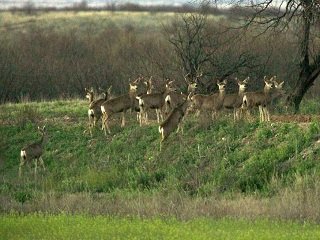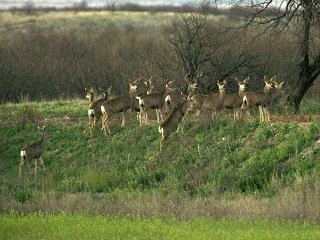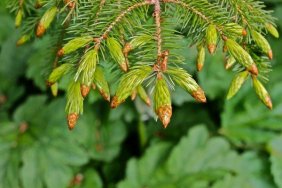 Planted food plots are a proven commodity to any deer hunter. Whether it is a hand-sewn plot in a wild and natural area, or a machine-planted plot on private land, plots are the way to go for attracting and killing. Understanding the basic needs of the wildlife is essential. Wildlife have basic needs that have to be met and your plot will be more effective if your spot also contains water, shelter and a place to raise fawns.
Planted food plots are a proven commodity to any deer hunter. Whether it is a hand-sewn plot in a wild and natural area, or a machine-planted plot on private land, plots are the way to go for attracting and killing. Understanding the basic needs of the wildlife is essential. Wildlife have basic needs that have to be met and your plot will be more effective if your spot also contains water, shelter and a place to raise fawns.
Location
Location should be the next consideration, and the location you choose will partially determine the success of the plot. Obviously you will want to make sure you have a clear view from your stand or blind, but selecting a secluded and undisturbed area will encourage older trophy animals better. Natural areas for plots that also allow adequate sunlight can include woodland openings, right-of-ways, firebreaks, logging roads, field corners and thinned out timber. In the name of discretion, it is always a good idea to not locate a plot near a roadside or in plain view of any roads or property lines. This will help eliminate the human interruption factor commonly known as poaching.
Soil Management
Once you have picked out a plot spot, you need to do some soil testing. You will be checking for soil pH to determine soil fertility. Depending on your pH levels, you will or won’t require fertilizers to help your plot reach its potential. Not only will fertile soil help your plot grow, it will also keep it healthy to insure maxim effectiveness. You can contact your county or state agriculture departments and find a testing site near you.
Seed Selection
The next task will be to determine seed selection. You can consult local biologists but most reputable seed companies can help you out with this as well. If you are plotting for deer, you will need to also use the seed manufacturer’s guidelines to find out when to plant and when to expect results. You will also need to know when your local deer will need your plot. Deer need a lot of food in late summer and late winter, so plots will need to be planted with that in consideration.
Keep Records
The final step in having a successful food plot is to keep records. Saving and reviewing information will help you fine-tune your operation and eventually help you to create more success. Some example areas to monitor are type of seed planted, time planted, rate and depth of planting, and growth observations. If you pick the right spot, do your homework and keep records, you can turn a food plot into a kill plot.








